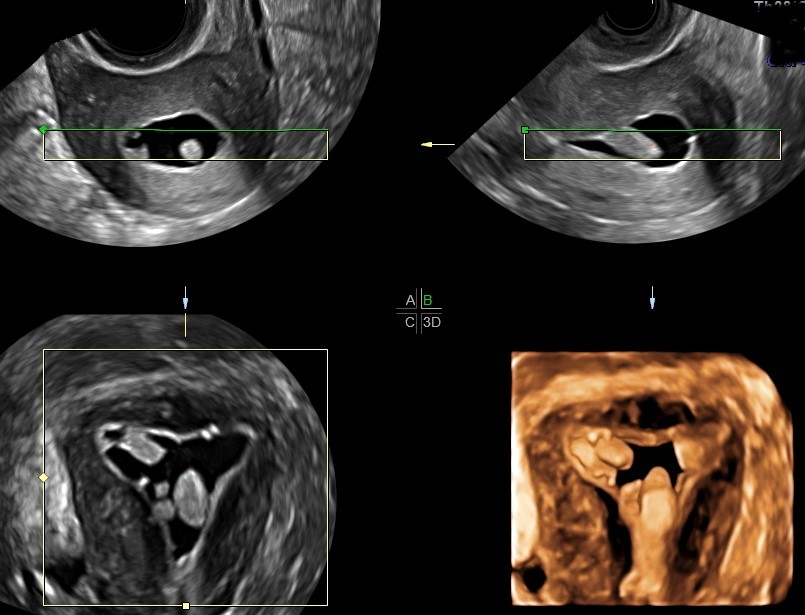For women struggling to get pregnant, it can be a stressful time, and a time of many tests and questions. Starting with a convenient, painless exam can go a long way toward improving patient satisfaction and the overall experience.
A saline sonogram, also called a saline ultrasound or sonohysterogram, is rapidly becoming the first choice for doctors to evaluate the uterus and fallopian tubes over hysterosalpingogram (HSG). HSG uses a contrast agent in the uterus and fallopian tubes, as well as X-rays to view the inside of the uterus and evaluate the fallopian tubes.
During a saline sonogram, a small amount of saline solution is injected into the uterus before the doctor or sonographer performs a transvaginal ultrasound. The saline solution helps develop clear images of the endometrium during the ultrasound scan, which looks for intrauterine growths, the size and shape of the uterus, and problems with the endometrium. Fluid with bubbles can also be used to see how the fluid passes through the fallopian tubes to evaluate whether they are open or blocked.
Three Main Benefits of a Saline Sonogram
Both tests provide valuable information for women struggling with infertility. However, a saline infusion with 3D ultrasound offers three main benefits to your patients as a first diagnostic exam.
1. Comfort
Sonohysterogram is replacing HSG as physicians' first choice because it provides clear views of the uterus and endometrium without causing undue discomfort for the patient. HSG, on the other hand, often causes painful cramping.
One study published in the Middle East Fertility Society Journal comparing HSG with saline infusion sonography found that a "significant number" of women experienced pain during HSG, and more women had greater discomfort after the HSG procedure.
Ultrasound is a familiar, comfortable exam that can be done right from the doctor's office. The patient can also see the same views as their doctor and discuss the findings in real time.
2. Accuracy
Studies are finding that saline infusion sonography is just as accurate as HSG for evaluating the uterus, if not more. Research published in the Journal of the Society of Laparoendoscopic Surgeons found that sonohsyterography had significantly higher sensitivity and specificity than HSG in detecting polyps, uterine fibroids, adhesions and septae in infertile patients. Using 3D ultrasound can provide clear views of soft tissues that can't be seen as well on X-rays.

saline-infused ultrasound uterine mass
The Middle East Fertility Society also concluded that sonohysterography was a more acceptable choice to screen for tubal patency than HSG, given its accuracy and high rates of patient satisfaction.
3. Safety
Americans' exposure to radiation has drastically increased in the past few decades as they undergo more and more imaging exams. Although the risk of cancer from X-rays is low, it's best to limit exposure as much as possible.
HSG exposes patients to ionizing radiation, and there's also a small risk of some patients being allergic to the contrast agent. Ultrasound offers no radiation exposure and has no known harmful effects.
A saline-infused ultrasound provides an accurate, minimally invasive option with less discomfort than HSG to evaluate women who may be infertile. Choosing ultrasound first ensures that women referred for HSG are those most likely to have blocked fallopian tubes requiring further examination. With this technology at their fingertips, gynecologists can limit pain and discomfort as much as possible during this stressful time in a patient's life.



